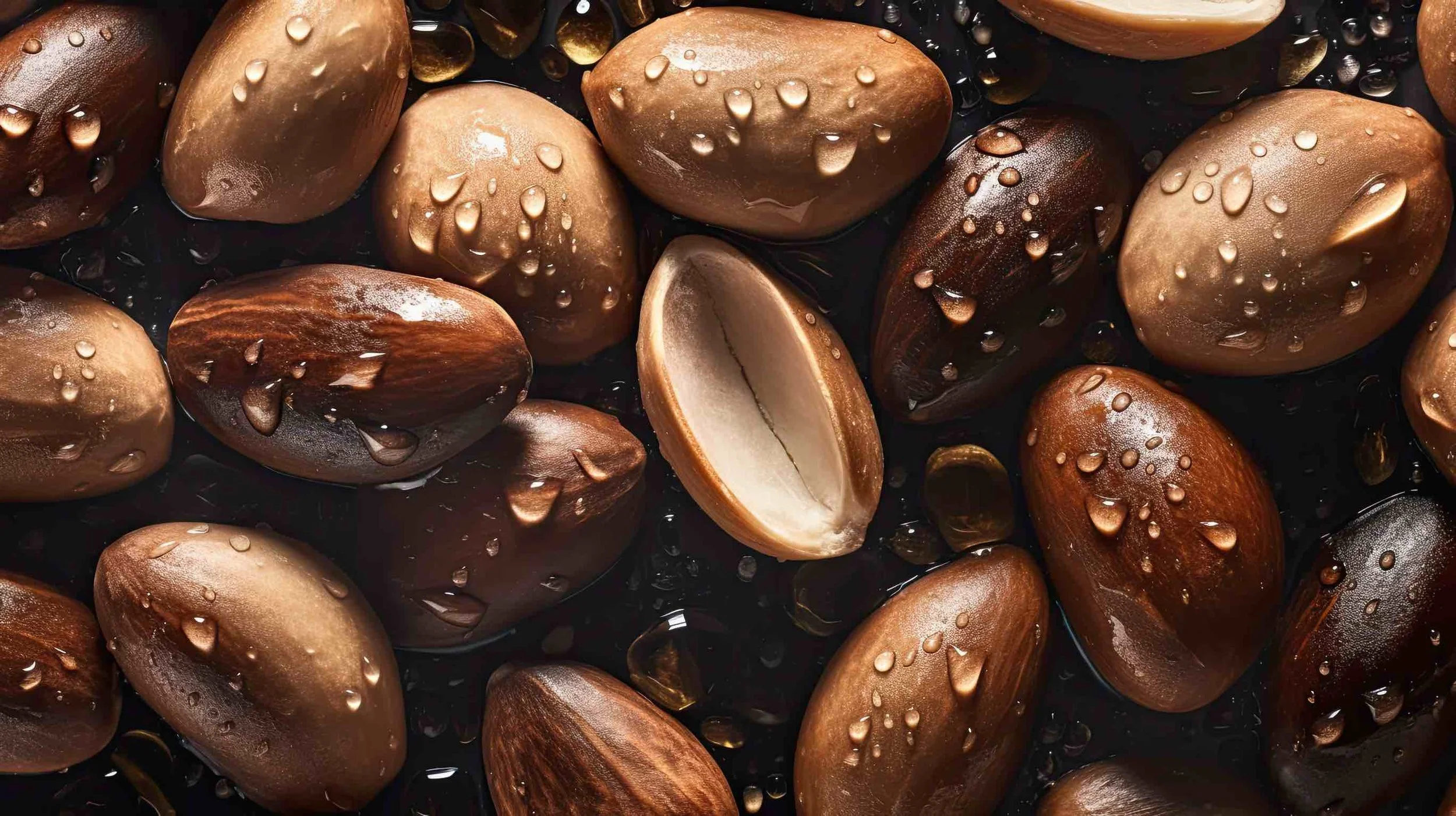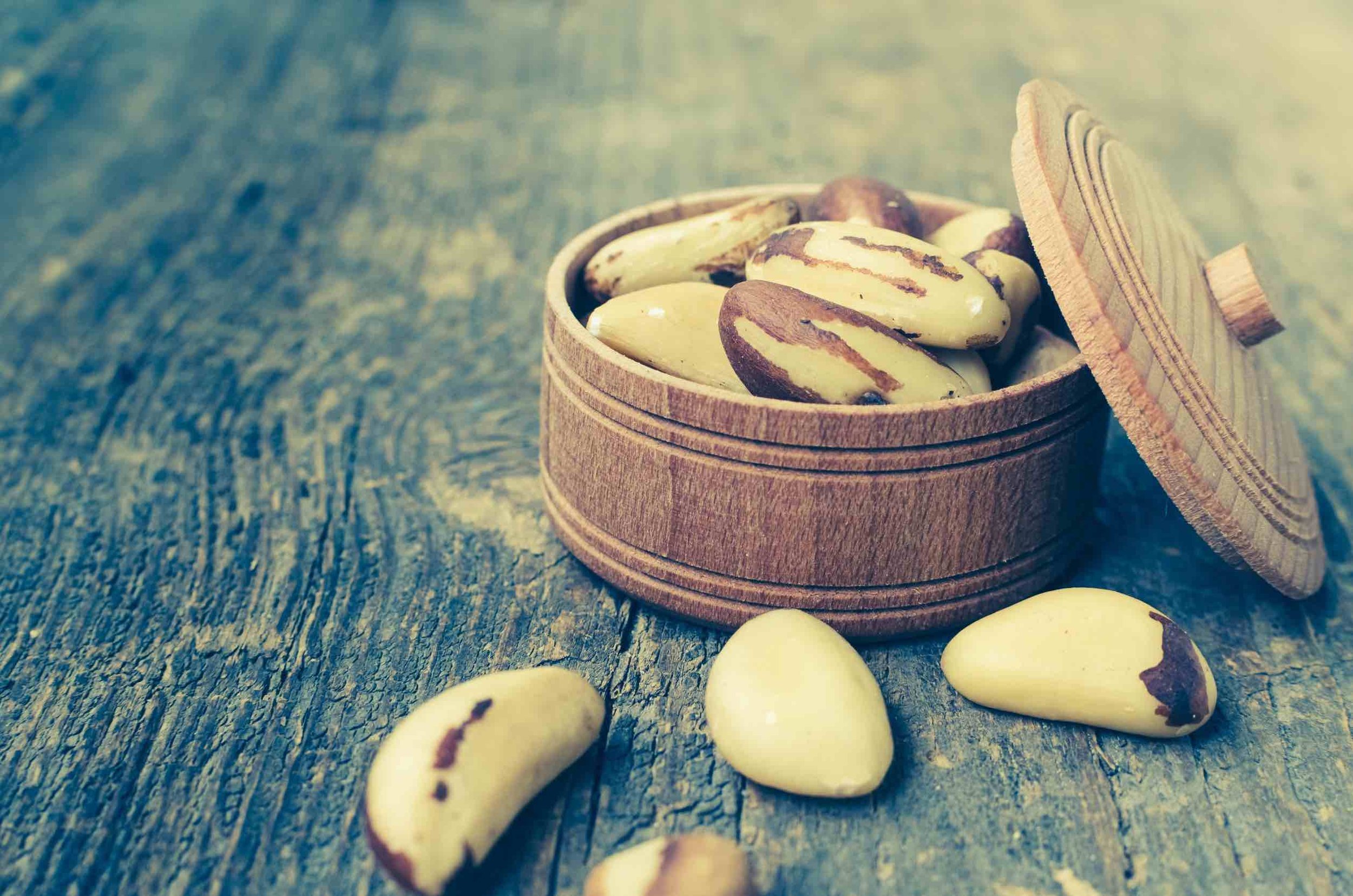brazil nuts
Quality bulk brazil nuts for wholesalers, distributors, suppliers and importers
Brazil nuts: A SHORT INTRODUCTION
The Brazil nut tree is an evergreen tree, towering at a height of 30 to 50 meters (98-164 ft). It's part of the Lecythidaceae family and is indigenous to the Amazon rainforest in Brazil, Peru, Colombia, and Bolivia.
Bolivia is the leading producer of Brazil nuts, both for local consumption and for export. Together with Peru, accounts for over 90% of the world's total Brazil nut output (around 82,000 metric tons in 2022). The majority of the Brazil nuts exported to top importers, namely countries such as the United States, the United Kingdom, and Germany.
A mature Brazil nut tree reaches peak production after about 10-15 years and can produce nuts for over 500 years. It yields heavy crops of nuts every two to three years, following the natural cycle of rain and dry seasons in the Amazon.
NUTRITIONAL FACTS
| NUTRIENT | UNIT | VALUE PER 100G |
|---|---|---|
| Water | g | 3.42 |
| Energy | kcal | 659 |
| Protein | g | 14.32 |
| Total lipid (fat) | g | 67.10 |
| Carbohydrates, by difference | g | 12.27 |
| Fiber, total dietary | g | 7.5 |
| Sugars, total | g | 2.33 |
Brazil nuts are also densely packed with nutrients, boasting high levels of proteins and carbohydrates. However, their primary nutrient is fats, the majority of which are monounsaturated and polyunsaturated fats, including omega-6 fatty acids, which contribute to heart health and other benefits. Simultaneously, Brazil nuts are a good source of dietary fiber, which aids in digestion and promotes a feeling of fullness. They contain an array of minerals and vitamins, including magnesium, zinc, vitamin E, and an extraordinarily high selenium content, which is vital for various metabolic processes. The selenium content is so high, in fact, that Brazil nuts are the richest known food source of this essential mineral. Like pecans, Brazil nuts are also renowned for their antioxidant properties, particularly due to the presence of vitamin E and selenium.
grades
Whole: This grade refers to Brazil nuts that are intact and have not been broken into smaller pieces. Whole Brazil nuts are often preferred for snacking or as a premium ingredient in various recipes.
Broken: This grade includes Brazil nuts that have been partially or completely broken into smaller pieces. While not as visually appealing as whole nuts, broken Brazil nuts are still suitable for various culinary uses.
Chipped: Chipped Brazil nuts are those with small pieces or fragments broken off the nut, typically due to handling or processing. These nuts may be used in baking or added to food preparations where the appearance is not critical.
Ground: Ground Brazil nuts refer to nuts that have been finely pulverized into a powder or meal-like consistency. Ground Brazil nuts are commonly used in baking, cooking, or as an ingredient in nut-based spreads or sauces.
Flaked: Flaked Brazil nuts are thin, flat pieces or slices of the nut. These flakes are often used as toppings in desserts, cereals, or added to dishes for added texture and flavor.
Packaging
Brazil nuts are commonly vacuum packed in 44lb cartons, and the presence of CO2 may vary depending on the specific packaging method and requirements of the producer or exporter. The use of vacuum packaging helps to preserve the freshness, quality, and shelf life of the Brazil nuts by removing air and creating a sealed environment. It helps to prevent oxidation and maintain the natural flavors and textures of the nuts.
In some cases, CO2 (carbon dioxide) may be added to the packaging as a modified atmosphere. The presence of CO2 helps to further extend the shelf life by inhibiting the growth of microorganisms and reducing the risk of spoilage. CO2 can also help to maintain the color and appearance of the nuts.
Harvesting
The harvesting period for Brazil nuts can vary slightly depending on the country and specific region. Here is a general overview of the harvesting periods for Brazil nuts in the top-producing countries:
Bolivia:
Harvesting season: Typically between December and March.
The peak harvesting period: Usually occurs in January and February.
Peru:
Harvesting season: Generally from December to March.
The peak harvesting period: Typically in January and February.
Brazil:
Harvesting season: Generally from January to April.
The peak harvesting period: Usually in February and March.
It's important to note that these timeframes are approximate and can vary based on factors such as weather conditions and local practices. Additionally, specific regions within each country may have slightly different harvesting schedules.
KEY POINTS
TOP PRODUCING COUNTRIES
The top producing countries for brazil nuts are:
Bolivia is the largest producer of Brazil nuts.
Peru is the second-largest producer of Brazil nuts.
Brazil, the namesake of the nut, is also a major producer and exporter.
These three countries, Bolivia, Peru, and Brazil, dominate the Brazil nut industry.
The Amazon rainforest regions in these countries provide favorable conditions for Brazil nut tree growth.
Production rankings may vary over time due to factors such as weather conditions and market dynamics.
For the most accurate and up-to-date information, refer to recent agricultural reports and industry sources.
90% of the worlds BRAZIL NUTS are grown in BOLIVIA AND PERU
A concept of healthy nutrition
Healthy food ingredient







